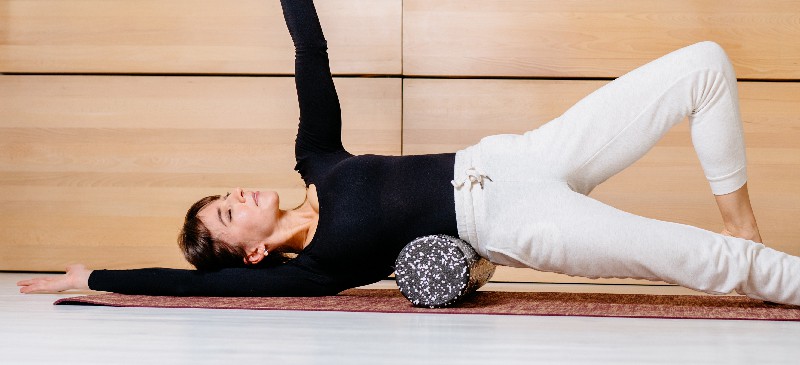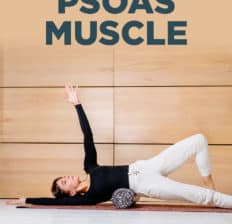This Dr. Axe content is medically reviewed or fact checked to ensure factually accurate information.
With strict editorial sourcing guidelines, we only link to academic research institutions, reputable media sites and, when research is available, medically peer-reviewed studies. Note that the numbers in parentheses (1, 2, etc.) are clickable links to these studies.
The information in our articles is NOT intended to replace a one-on-one relationship with a qualified health care professional and is not intended as medical advice.
This article is based on scientific evidence, written by experts and fact checked by our trained editorial staff. Note that the numbers in parentheses (1, 2, etc.) are clickable links to medically peer-reviewed studies.
Our team includes licensed nutritionists and dietitians, certified health education specialists, as well as certified strength and conditioning specialists, personal trainers and corrective exercise specialists. Our team aims to be not only thorough with its research, but also objective and unbiased.
The information in our articles is NOT intended to replace a one-on-one relationship with a qualified health care professional and is not intended as medical advice.
How to Strengthen the Psoas Muscle (& Help Relieve Back Pain)
March 2, 2023

All too often we find ourselves experiencing aches and pains in our bodies, especially in the low back. If you find yourself commonly searching for remedies for fast back pain relief, it may be time to investigate the psoas muscle.
The psoas major, technically named the iliopsoas, may very well be one of the most important muscles in the body. Why? This deep-seated core muscle helps support your back and so much more.
If the psoas is weak, it could be the cause of back pain, neck pain and various other issues. In fact, the psoas major muscle is especially unique, particularly when it comes to postural function. It’s the only muscle that connects the lumbar spine and lower body. (1)
It’s clear that taking care of this deep psoas muscle is crucial to a strong, pain-free body. Many believe a healthy psoas is important for emotional and spiritual health, too.
What Is the Psoas Muscle?
There are two psoas muscles on each side of the back. The larger one is called the psoas major, and the smaller the psoas minor.
The psoas major, often known as “the mighty psoas,” originates at the spine around the bottom of the rib cage and runs down the thigh along the femur. The psoas major works by flexing the hip.
The psoas minor also originates at the spine around the bottom of the rib cage, but it runs down to the bony pelvis. It acts to flex the lower spine.
The psoas helps us perform all sorts of daily activities, including freeing the legs for walking and running. The psoas muscle is also vital in providing good posture.
Anyone who takes Pilates knows the psoas intimately — the form of exercise is praised for improving psoas muscle health and related back pain. Olympic weightlifters, runners, triathletes, gymnasts — all heavily rely on the support of the psoas, too.
Let’s delve into where the muscle is located.
There are two muscles that create what is called the iliopsoas group. They are the psoas major and iliacus.
You may have heard a fitness instructor suggest stretching the hip flexors at the end of your strength class. The psoas major and iliacus are important to the hip flexor muscles because they help stabilize and support the lower back.
The word psoas is Greek and means loin region. The psoas muscle group makes an upside down V, connected to the spine starting at about the bottom point of the rib cage and working its way down to the top of the femur. Specifically, it is a long, spindle-like muscle, found between the pelvic inlet and the pelvic floor.
It joins the iliacus muscle which is what forms the iliopsoas. A chiropractor can actually apply pressure in the pelvic inlet area to help release a tight psoas. This is commonly done for athletes in addition to stretches, although it should always be done by a soft-tissue professional with expertise in psoas release.
Psoas Issues
A strong psoas supports everyday activity, but a weak psoas can make even the easiest task a challenge in addition to causing bigger problems, such as sway back. The psoas is a key messenger of the central nervous system, and when there is lack of support from it, the way your body responds to gravity is different than intended.
Muscle imbalances can often cause the body to compensate in another area, and that can cause additional issues and even injury. Some people are even diagnosed with psoas syndrome or iliopsoas tendonitis. These ailments cause pain in the hip area.
While these are two separate conditions, they are often described similarly. However, psoas syndrome is a condition involving a stretch, tear or rupture of the iliopsoas muscle or tendon. Iliopsoas tendonitis involves an inflamed muscle.
Piriformis syndrome is also closely associated with this sort of pain and may be referenced when seeking a diagnosis.
Yoga therapist Danielle Prohom Olson calls the psoas muscle “the muscle of the soul.” Olson says on her website: “The psoas is connected to the diaphragm through connective tissue or fascia which affects both our breath and fear reflex. This is because the psoas is directly linked to the reptilian brain, the most ancient interior part of the brain stem and spinal cord.”
In fact, psoas expert Liz Koch, author of “The Psoas Book,” says that emotional trauma or lack of emotional support can actually lead to a chronically contracted psoas. This results in a lack of core awareness.
Since your ancient limbic system is closely related to emotions like fear and anxiety, this makes sense.

Symptoms of psoas problems include:
- Discomfort, pain and aches in the front hip socket
- Restriction in the hip socket
- Iliopsoas bursitis/tendonitis
- Restriction moving the thigh backward
- Deep pelvic pain on the side that feels tight
- Deep “bellyache”
- Chronic constipation
- Twisted pelvis
There are two common behaviors that typically cause a weak psoas: sitting all day and bad posture. The National Academy of Sports Medicine (NASM) notes too much sitting causes a weak psoas, and a weak psoas can lead to lower back problems.
All that sitting can cause the psoas, iliopsoas and rectus femoris to remain in a shortened position for extended periods of time. What happens is that these muscles get used to this shortened state, and that makes them tight and overactive.
Because these muscles are attached to the pelvis and lumbar spine, this shortening or tightening of the muscles may cause a forward tilt of the pelvis and weakness in the gluteal muscles. Combined, this can cause lower back pain.
Consider a standing desk to reduce your sitting time each day.
Bad posture, whether standing or sitting, can create a lot of discomfort if not corrected. Rounded shoulders or a forward head posture may seem to be the easiest on the body, but since we are constantly working against gravity, it weakens the supporting muscles of the body over time.
Benefits of a Healthy Psoas Muscle
1. May Reduce Low Back Pain
A study published in the Journal of American Osteopathic Association identified the psoas as an important muscle linked to our core muscle development. The psoas was initially overlooked as a solution for back pain that a 48-year-old man was experiencing. According to the researchers:
After the correct diagnosis was made, he was treated by an osteopathic physician using osteopathic manipulative treatment, in conjunction with at-home stretches between office treatments. At his 1-month follow-up appointment, he demonstrated continued improvement of symptoms and a desire for further osteopathic manipulative treatment.
2. Can Affect Sports Activities
The psoas is actually the muscle that allows you to run. Each knee lift causes a contraction of this rope-like muscle, and each time the leg swings back to its original position, the psoas lengthens.
Runner’s World reports that a runner contracts and lengthens the psoas more than 5,000 times during an hourlong run.
The psoas is also a big factor in good posture. The psoas, combined with other core muscles, such as the abdominals and obliques, as well as those that help form and support the lower back, provides stability offering a strong posture.
Thus, it makes sense that if there is a problem with the psoas, it will likely affect your sports activities, in particular those that require running.
3. Provides a More Pain-Free Pregnancy
Pregnancy creates a lot of changes in the body, one of which is the shift in your center of gravity. It shifts forward as the baby develops, causing the pelvis to move toward the front of the body. This may cause the muscles in the lower back region to tighten and the hamstrings and glutes to stretch out and weaken.
Additionally, the ligaments attached to the uterus can come under a lot of stress, causing pain in the abdomen and lower back. The psoas and surrounding muscles take on much of the stress, which can cause discomfort due to tightness and imbalances.
However, by performing stretches and exercises that help strengthen the psoas, you can eliminate most if not all of the pain.
How to Strengthen the Psoas Muscle
Whether an athlete, pregnant or not active at all, it’s important to release the psoas to ensure that it is in good working order, giving you the support you need to perform any tasks — even picking up those groceries or your toddler. Yoga, Pilates and a core routine are great options, but you can make a world of difference by performing a some key stretches, include lower back stretches, right at home.
Below are some psoas stretches and exercises that you can do a few days a week. If you sit at a desk all day, it’s recommended that you perform these exercises daily, if possible. It only takes a few minutes and can change the way you move throughout your day.
Foam Rolling
While releasing the psoas should be left to a soft-tissue professional, NASM suggests foam rolling other tight hip muscles, including the TFL and hip adductors. As you roll, hold on spots that are tender for 30 to 90 seconds.
Check with your doctor to make sure foam rolling is OK for you. NASM notes it’s not appropriate for certain conditions, including malignancies, blood clots, aneurysms, anticoagulant therapy, congestive heart failure, open wounds or skin lesions, bursitis, obstructive edema, or certain other health conditions.
Hip Flexor Stretch (Thomas Stretch)
Sit tall at the end of a table, thighs halfway off the table. Grabbing one knee, pull it to your chest, and lean back until your lower back and sacrum are flat on the table.
Note that if the back is rounding and the pelvis is tipping, you’re pulling the knee too far. To correct, simply loosen your hold.
Allow the other leg to hang free off the table. Hold for 30 to 60 seconds.
Perform three to four repetitions on each side.
Kneeling Lunge
This is a very common exercise performed during the stretch segment of a lot of group fitness classes at the gym. To do it, kneel down on one knee (you may want a pad underneath if you are on a hard surfaced floor), with the front leg forward at a 90-degree angle. Tuck your pelvis, and gently lunge forward.
Continue to lean into the stretch slowly, ensuring that there is no unusual pain. A tight psoas may cause you to arch your lower back. However, try to keep the back straight.
To add a little stretching to the core, raise your arms overhead, and lean the hips forward another inch or two. Hold the lunge for 30 seconds, completing three repetitions on each side.
Leg Lifts
This is also a great glute exercise. Lie on your back, and extend your legs in front of you. Place your hands either underneath your bottom if your back arches too much or above your head as long as your lower back is pressed into the ground by focusing on bringing your belly button toward the spine.
Lift your left leg several inches above the ground, and hold for three to five seconds. Do 10 to 15 repetitions on each leg.
As you get stronger, you can do these using ankle weights.
Ball Bridge
Lie on a stability ball like you would to perform crunches, with your neck and shoulder resting comfortably on the ball. Be sure to engage your core and not let your hips sag, with your feet straight ahead with toes pointing forward, shoulder-width apart.
Slowly and controlled, drop your glutes toward the floor (don’t go so far that your shoulders come off of the ball), and then push up through the heels to engage the glutes and push your hips back up in line with your spine.
This exercise is used to strengthen weak gluteal muscles often associated with a tight psoas.
Psoas Massage and Release
The psoas is deeply embedded into the core cavity area, is surrounded by vital organs and can be hard to find. A chiropractor or physical therapist may be able to help you best when it comes to actually releasing the psoas. It is a sensitive area and requires total relaxation of the patient.
General full-body massage can certainly help, but to really get to the psoas for an assisted release, working with a trained professional is recommended.
Working on stretching and releasing other hip muscles closer to the surface of the body can go a long way in reducing overall tension in your core cavity and ultimately aid in improving psoas health.
Precautions
It is always best to take any new exercise slow. Consult your sports medicine doctor, physical therapist or chiropractor prior to performing the exercises.
When it comes to a psoas release, there are potentially dangerous side effects if you don’t work with someone certified and trained in this area, so you should consult with a professional.





